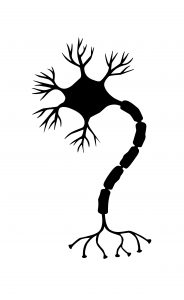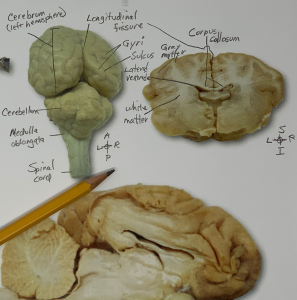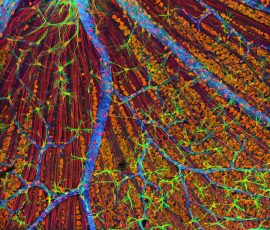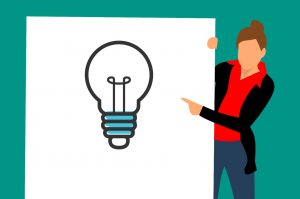Power Tips for Dissection Activities
TAPP Radio Episode 34
Quick Take
0:43 | Summer neuroscience workshop
3:45 | Ganglion cells
10:52 | Sponsored by HAPS
7:21 | Featured topic 1: Dissection lists
30:49 | Sponsored by AAA
30:02 | Featured topic 2: Pre-dissection practice
Listen Now!
Want to listen to this episode’s Preview (with additional content)?
Students don’t often realize that they are their own best teacher. (Sr. Virginia Brinks)
1 |Summer neuroscience workshop

3 minutes
Thirteenth Annual Summer Workshop: Hardware and Software Experiments to Teach Neuroscience. Kevin participated in an earlier version of this workshop and got a lot out of it.
- During 2019, partial costs associated with the Workshop (lodging in MU dorms + meals) will be provided by a grant.
- See Neuro Workshop Flyer Summer 2019
- 1-week Summer Course
- July 14 to July 20, 2019
- Starts at 7 p.m. on Sunday, July 14, and ends at 5 p.m. on Saturday, July 20 (travel days of Sunday 14 July and Sunday 21 July)
- Limited to 10 participants
- Deadline of February 15, 2019
- Review of applications may begin earlier
2 | Ganglion cells
Light-sensitive ganglion cells contain the visual pigment melanopsin that is involved a non-imaging kind of vision that helps us detect sunlight levels in our environment. This information helps us sync our biological clocks to our environment—and may affect our mood.
- Scientists Find A Brain Circuit That Could Explain Seasonal Depression (brief article and audio story)
- Luxotonic signals in human frontal-polar cortex: A possible substrate for effects of light on mood (abstract of a presentation at Neuroscience 2018)
- Light Affects Mood and Learning through Distinct Retina-Brain Pathways (research article)
- Ganglion cell (overview of the ganglion cell of the retina)
3 | Sponsored by HAPS
0.5 minutes
 The Human Anatomy & Physiology Society (HAPS) is a sponsor of this podcast. Did you know there’s a one-day regional HAPS conference in March? Check it out. You can help appreciate their support by clicking the link below and checking out the many resources and benefits found there.
The Human Anatomy & Physiology Society (HAPS) is a sponsor of this podcast. Did you know there’s a one-day regional HAPS conference in March? Check it out. You can help appreciate their support by clicking the link below and checking out the many resources and benefits found there.
4 | Dissections lists
19.5 minutes
Dissection lists are a type of “lab list” in which each structure required for discovery, familiarization, and/or mastery is listed in a clearly organized handout. This handout can be used by students for organizing learning and clarifying their learning objectives—and by teachers to help monitor student progress for effective coaching.
5 | Sponsored by AAA
0.5 minute
The searchable transcript for this episode, as well as the captioned audiogram of this episode, are sponsored by The American Association of Anatomists (AAA) at anatomy.org
6 | Pre-dissection practice activity

7 minutes
A simple handout with photographs of dissection specimens can be used by students to walk through their dissection activity before they arrive in the lab. This gives them a stronger preparation that a “cold start” in lab, which often gets chaotic of students aren’t practiced in finding structures.
- A similar approach can be used for learning the skeleton
This podcast is sponsored by the
Human Anatomy & Physiology Society

Stay Connected
The easiest way to keep up with new episodes is with the free mobile app:


Or you can listen in your favorite podcast or radio app.
Click here to be notified by blog post when new episodes become available (make sure The A&P Professor option is checked).
Transcript
To read a complete transcript of this episode,
click here.
The searchable transcript for this episode is sponsored by
The American Association of Anatomists.

Call in
Record your question or share an idea and I may use it in a future podcast!
Toll-free:
1·833·LION·DEN
(1·833·546·6336)
Local:
1·636·486·4185
Email:
podcast@theAPprofessor.org
Share

Preview of Episode 35
Host Kevin Patton previews the content of the upcoming full episode, which focuses on the big ideas (essential concepts) of the A&P course. There’s more… a few content updates… plus some word dissections, a toast to Elaine Marieb, and a recommendation from The A&P Professor Book Club.
Topics
.5 minute
- News about how smell relates to stress
- News about how oxytocin works
- Cholesterol testing for cardiac risk – are changes coming?
- Big ideas – the essential concepts of A&P
Word Dissections
9.5 minutes
- Dissection
- Section
- Concept
- Gradient
- Apolipoprotein B (ApoB)
Elaine Marieb
1.5 minute
- A toast to the late Elaine Marieb
- Elaine Marieb obituary my-ap.us/MariebObit
Book Club
3.5 minutes
- The Core Concepts of Physiology: A New Paradigm for Teaching Physiology
- by Joel Michael , William Cliff, Jenny McFarland, Harold Modell, Ann Wright
- Book details:
- Published on behalf of APS The American Physiological Society by Springer
- APS members: my-ap.us/CoreConceptsBook
- Bookstore: amzn.to/2GJd2Rb
- 15 core concepts of physiology
- Explanations and applications of a concept-based approach to the physiology course
- Concepts:
- Evolution
- Homeostasis
- Causality
- Energy
- Structure/function
- Cell theory
- Levels of organization
- Cell–cell communication
- Cell membrane
- Flow down gradients
- Genes to proteins
- Interdependence
- Mass balance
- Physics/chemistry
- Scientific reasoning
Last updated: December 30, 2020 at 10:41 am







